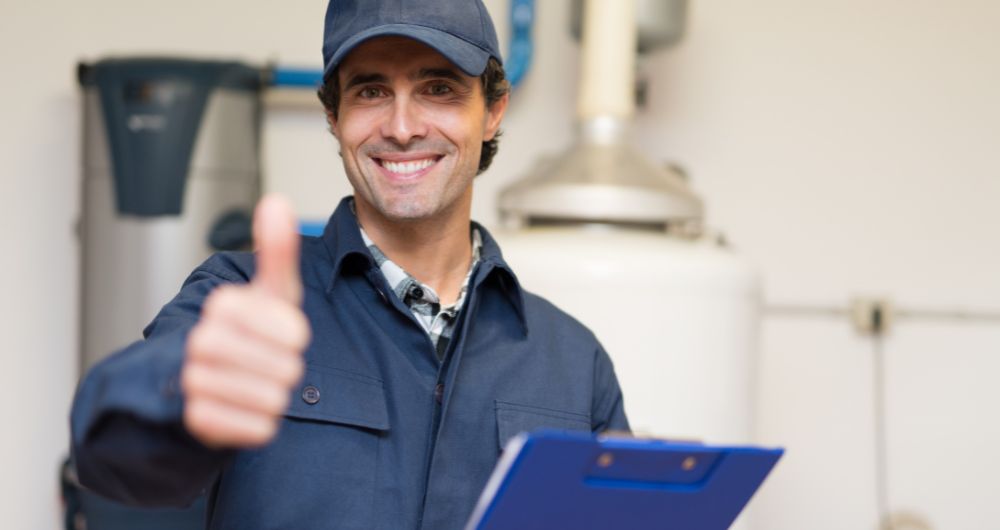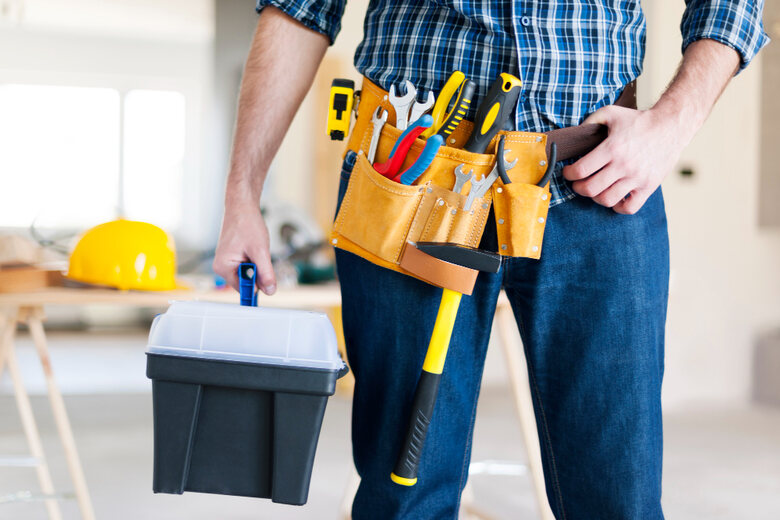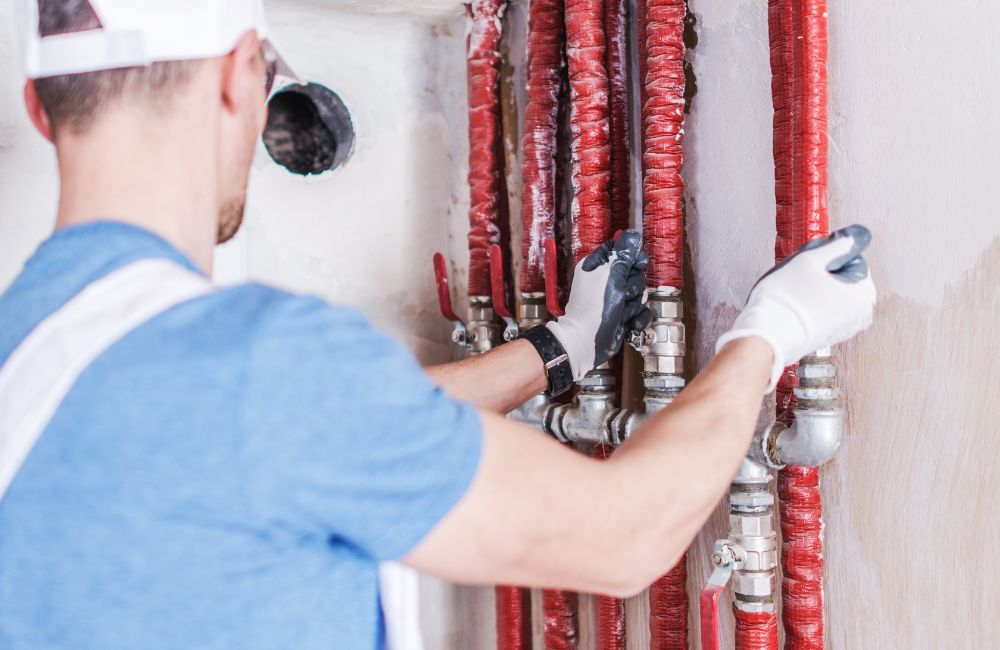Choosing the right sump pump installer is crucial for ensuring your home is protected from water damage. A poorly installed sump pump can lead to a range of problems, including basement flooding, mold growth, and structural damage. Given the growing importance of sump pumps, it’s notable that the sump pumps market was valued at $18,116.7 million in 2023 and is projected to reach $74,964.3 million by 2032, growing at a compound annual growth rate (CAGR) of 17.3% from 2024 to 2032.
Here are essential questions to ask your sump pump installer before hiring, helping you make an informed decision and ensuring you receive quality service.
Table of Contents
Why You Need a Professional Installer
9 Questions to Ask Your Sump Pump Installer Before Hiring
1. How Long Have You Been in Business?
2. Do You Have Any References I Can Contact?
3. What Type of Sump Pump Do You Recommend?
4. Do You Offer Any Warranties on Your Work?
5. What is the Estimated Cost of the Installation?
6. How Long Will the Installation Take?
7. What is the Best Location for the Sump Pump?
9. Will You Teach Me How to Use the Sump Pump?
What You Need to Know About Installation Process
Secure Your Home with L&P Plumbing’s Expert Sump Pump Services in Torrington, CT
| Key Takeaways ✔ Hiring a professional sump pump installer ensures the complex task of installation is done correctly, reducing risks of malfunction. ✔ An installer with several years in business is likely more reliable and better equipped to handle various challenges. ✔ Contacting previous customers helps assess the installer’s reliability, quality of work, and professionalism. ✔ Good warranties on work and products indicate confidence in quality; understand what’s covered and how to claim. ✔ Cost Transparency: Obtain a detailed estimate to budget properly and avoid hidden fees. Compare estimates from different installers for the best value. ✔ Installation Timeline: Knowing how long the installation will take helps you plan. Ensure the installer provides a realistic timeline and informs you of any changes. ✔ Post-Installation Maintenance: Regular inspections and maintenance by a professional can prevent costly repairs and ensure the sump pump operates efficiently. |
Why You Need a Professional Installer
Installing a sump pump is a complex task that requires professional expertise. A sump pump installer has the necessary skills and experience to handle the intricacies of the job. Improper installation can result in a malfunctioning pump, which may fail when you need it the most. By hiring a professional sump pump installer near me, you minimize the risks and ensure that your sump pump functions optimally.
- Complex Plumbing Work: Sump pump installation involves complex plumbing work, including connecting the pump to your home’s drainage system. A professional sump pump installer understands how to integrate the pump seamlessly into your existing system.
- Electrical Connections: Sump pumps require proper electrical connections to function. A certified sump pump installer ensures that the electrical work complies with safety standards, preventing potential hazards.
- Local Building Codes: A professional sump pump installer is familiar with local building codes and regulations, ensuring your installation meets all legal requirements.
Factors to Consider Before Sump Pump Installation
Before installing a sump pump, consider the following factors:
- Basement Flooding History: Assess the history of flooding in your basement to determine the need for a sump pump.
- Local Climate: Evaluate the climate in your area, as heavy rainfall or snowmelt can increase the risk of basement flooding.
- Home Foundation Type: Different foundation types may require different sump pump solutions.
- Drainage System Assessment: Ensure your home’s drainage system is adequate and identify potential water entry points.
9 Questions to Ask Your Sump Pump Installer Before Hiring
Before you hire a sump pump installer, it’s crucial to ask the right questions to ensure you choose a qualified professional. Here are the 9 questions you should ask your sump pump installer before hiring them:
1. How Long Have You Been in Business?
When choosing a sump pump installer near me, experience matters. An installer who has been in business for several years is likely to have encountered a variety of installation scenarios and challenges, making them better equipped to handle your specific needs. Ask the sump pump installer about their experience and any notable projects they’ve completed. Longevity in the business often indicates reliability and expertise.
- Industry Changes: Experienced installers have adapted to industry changes and improved techniques.
- Knowledge Depth: Long-term businesses usually have a deeper understanding of various sump pump models and technologies.
- Network: Established companies often have strong relationships with suppliers and other professionals, which can be beneficial.
2. Do You Have Any References I Can Contact?
Checking references is a crucial step in the hiring process. A reputable sump pump installer should have a list of satisfied customers who can vouch for their work. Contacting these references allows you to gauge the sump pump installer’s reliability, professionalism, and the quality of their work. Ask the references about their overall experience, any issues they encountered, and how the sump pump installer addressed them.
- Service Quality: Confirm if the installer consistently delivers high-quality service.
- Timeliness: Check if the installer completes projects on time.
- Follow-Up: Ask about the installer’s follow-up service and support.
3. What Type of Sump Pump Do You Recommend?
There are various types of sump pumps available, including pedestal pumps, submersible pumps, and battery backup pumps. Each type has its advantages and is suitable for different situations. A knowledgeable sump pump installer will recommend the best type of pump for your specific needs, taking into account factors like the size of your basement, the frequency of flooding, and your budget.
- Efficiency: Discuss the energy efficiency of the recommended pump.
- Durability: Inquire about the lifespan and durability of the recommended pump.
- Maintenance Needs: Ask about the maintenance requirements for the recommended pump.
4. Do You Offer Any Warranties on Your Work?
Warranties are a critical aspect of any installation project. They provide peace of mind by ensuring that any issues arising from the installation will be addressed by the sump pump installer near me. Ask your sump pump installer about the warranties they offer on their work and the sump pump itself. A good warranty indicates confidence in the quality of their work and the products they use.
- Scope of Warranty: Understand what is covered under the workmanship warranty.
- Exclusions: Be aware of any exclusions or conditions in the warranty.
- Warranty Claims: Learn about the process for making a warranty claim.

5. What is the Estimated Cost of the Installation?
Understanding the cost of the installation upfront helps you budget appropriately and avoid unexpected expenses. Ask for a detailed estimate that includes labor, materials, and any potential additional fees. A transparent sump pump installer will provide a clear breakdown of costs and explain any variables that might affect the final price. Comparing estimates from different sump pump installers can also help you find the best value for your investment.
- Payment Terms: Clarify the payment schedule and terms.
- Hidden Costs: Ensure there are no hidden costs or unexpected fees.
- Cost-Saving Options: Ask if there are any ways to reduce costs without compromising quality.
6. How Long Will the Installation Take?
Knowing the expected timeline for the installation allows you to plan accordingly. Ask your sump pump installer about the duration of the project and any factors that could cause delays. A professional sump pump installer should provide a realistic timeline and keep you informed of any changes. Understanding the time commitment involved can help you manage your schedule and minimize disruptions.
- Project Phases: Understand the different phases of the installation process.
- Potential Delays: Identify potential causes of delays and how they will be managed.
- Completion Deadline: Ensure there is a clear deadline for project completion.
7. What is the Best Location for the Sump Pump?
The location of your sump pump is crucial for its effectiveness. A sump pump installer should assess your basement and recommend the optimal location for the pump. Factors to consider include the lowest point in your basement, proximity to electrical outlets, and ease of access for maintenance. Proper placement ensures that the sump pump can effectively remove water and prevent flooding.
- Environmental Factors: Consider factors such as humidity and temperature in the placement decision.
- Noise Level: Choose a location that minimizes noise disturbance.
- Access for Repairs: Ensure the pump is placed where it can be easily accessed for future repairs.
8. Will You Need to Dig?
Sump pump installation often involves some excavation, especially if a sump pit needs to be created. Ask your sump pump installer about the extent of digging required and how it will impact your basement. Understanding the level of disruption can help you prepare for the installation process and ensure that any necessary repairs or landscaping are planned for afterward.
- Excavation Method: Inquire about the method of excavation and equipment used.
- Site Cleanup: Ensure that the installer will clean up the site after excavation.
- Restoration Plans: Discuss plans for restoring any disrupted areas post-installation.
9. Will You Teach Me How to Use the Sump Pump?
After installation, it’s important to know how to operate and maintain your sump pump. A reliable sump pump installer will provide instructions and demonstrate how to use the pump effectively. This includes testing the pump, understanding the alarm system, and performing routine maintenance. Being knowledgeable about your sump pump ensures that you can respond quickly in case of any issues and prolong the life of the pump.
- User Manual: Obtain a user manual and any relevant documentation.
- Routine Checks: Learn about routine checks and maintenance tasks.
- Troubleshooting Tips: Get tips on troubleshooting common issues and understanding warning signs.

What You Need to Know About Installation Process
A typical sump pump installation process involves several steps:
- Assessment: The sump pump installer assesses your basement to determine the best location and type of sump pump.
- Excavation: If necessary, the sump pump installer digs a sump pit to house the pump.
- Installation: The sump pump is installed in the pit, and the discharge pipe is connected to direct water away from your home.
- Testing: The sump pump installer tests the pump to ensure it functions correctly.
- Cleanup: The area is cleaned up, and any necessary repairs are made.
Clear communication with your sump pump installer throughout this process is essential to ensure everything goes smoothly and you understand each step.
- Initial Consultation: Discuss your needs and expectations with the sump pump installer.
- Site Preparation: Prepare the installation site by clearing any obstacles and ensuring the area is accessible.
- Final Inspection: Conduct a final inspection with the sump pump installer to ensure everything meets your satisfaction.
Post-Installation Maintenance
Regular inspections and maintenance by a professional sump pump installer can help identify potential issues early and prevent costly repairs. Consistent upkeep ensures that your sump pump remains in optimal working condition, providing peace of mind and long-term protection against water damage. The average cost of repairing a sump pump is $475, with higher costs averaging $550 and lower costs averaging $400. By investing in regular maintenance, you can avoid these repair expenses and ensure your sump pump continues to function efficiently. Here are several important aspects to consider:
Annual Inspections
Schedule annual inspections with your sump pump installer to check for wear and tear. During these inspections, a professional sump pump installer will:
- Check Mechanical Components: Inspect the pump’s mechanical components, such as the impeller, motor, and float switch, to ensure they are functioning properly.
- Evaluate Electrical Connections: Ensure all electrical connections are secure and there are no signs of wear or corrosion.
- Inspect Discharge Line: Examine the discharge line for any blockages or damage that could impede water flow.
- Test Pump Operation: Perform a test run of the pump to verify that it activates and deactivates correctly under normal conditions.
Seasonal Maintenance
Perform seasonal maintenance tasks, especially before heavy rain or snowmelt seasons. Seasonal maintenance ensures your sump pump is prepared for periods of increased water influx. Key tasks include:
- Clean the Sump Pit: Remove any debris, sediment, or obstructions from the sump pit to prevent clogs and ensure smooth pump operation.
- Check Battery Backup: If your sump pump has a battery backup system, test the battery and replace it if necessary to ensure it will function during power outages.
- Inspect Ventilation: Ensure the area around the sump pump is well-ventilated to prevent overheating and ensure optimal performance.
- Examine Alarm Systems: Test any alarm systems connected to the sump pump to ensure they provide timely alerts in case of high water levels or pump failure.
Troubleshooting
Learn how to troubleshoot common problems, such as strange noises or continuous running. Understanding basic troubleshooting can help you address minor issues promptly and prevent them from escalating. Key troubleshooting steps include:
- Identify Strange Noises: Unusual noises may indicate mechanical issues, such as a misaligned impeller or a malfunctioning motor. Knowing how to identify and describe these noises can help your sump pump installer diagnose and fix the problem quickly.
- Address Continuous Running: A sump pump that runs continuously may be due to a stuck float switch, a high water table, or a malfunctioning check valve. Learn how to inspect and adjust the float switch and check valve, and recognize when professional assistance is needed.
- Monitor Water Levels: Regularly check the water levels in the sump pit to ensure the pump is removing water effectively. High water levels that persist may indicate a problem with the pump or the drainage system.

Frequently Asked Questions
How many hours does it take to install a sump pump?
The installation of a sump pump typically takes about 4 to 8 hours, depending on the complexity of the job and site conditions. Factors like the type of pump, the need for a sump pit, and the home’s layout can affect the time required. It’s important to schedule the installation when you can accommodate potential time variations.
What is the normal life expectancy of a sump pump?
The normal life expectancy of a sump pump is around 10 years, though it can vary based on usage, maintenance, and quality of the pump. Regular maintenance and timely repairs can extend the pump’s lifespan. High-quality pumps and proper installation also contribute to longer life expectancy.
Is a sump pump weep hole necessary?
Yes, a weep hole is necessary to prevent air lock in the pump, ensuring it operates efficiently by allowing trapped air to escape. Without a weep hole, the pump may fail to start properly, leading to potential flooding. Proper placement and size of the weep hole are crucial for optimal pump performance.
What time of year is a sump pump most useful?
A sump pump is most useful during the spring and early summer when heavy rains and snowmelt can cause increased water levels and potential flooding. It is also critical during periods of unexpected heavy rainfall or storms. Ensuring your sump pump is in good working condition before these seasons can prevent significant water damage.
Is it OK to pour water in sump pump?
Yes, it is OK to pour water into the sump pump to test its operation. This helps ensure the pump is functioning properly and can handle actual flooding conditions. Regular testing can help identify any issues early, allowing for timely repairs and maintenance.
Secure Your Home with L&P Plumbing’s Expert Sump Pump Services in Torrington, CT
Ready to ensure your home is protected from water damage? Trust the experts at L&P Plumbing to install and maintain your sump pump with the highest level of professionalism and care. Contact L&P Plumbing today to schedule an installation or inspection in Torrington, CT. Secure your home with the best sump pump services in Torrington, CT, from L&P Plumbing.

